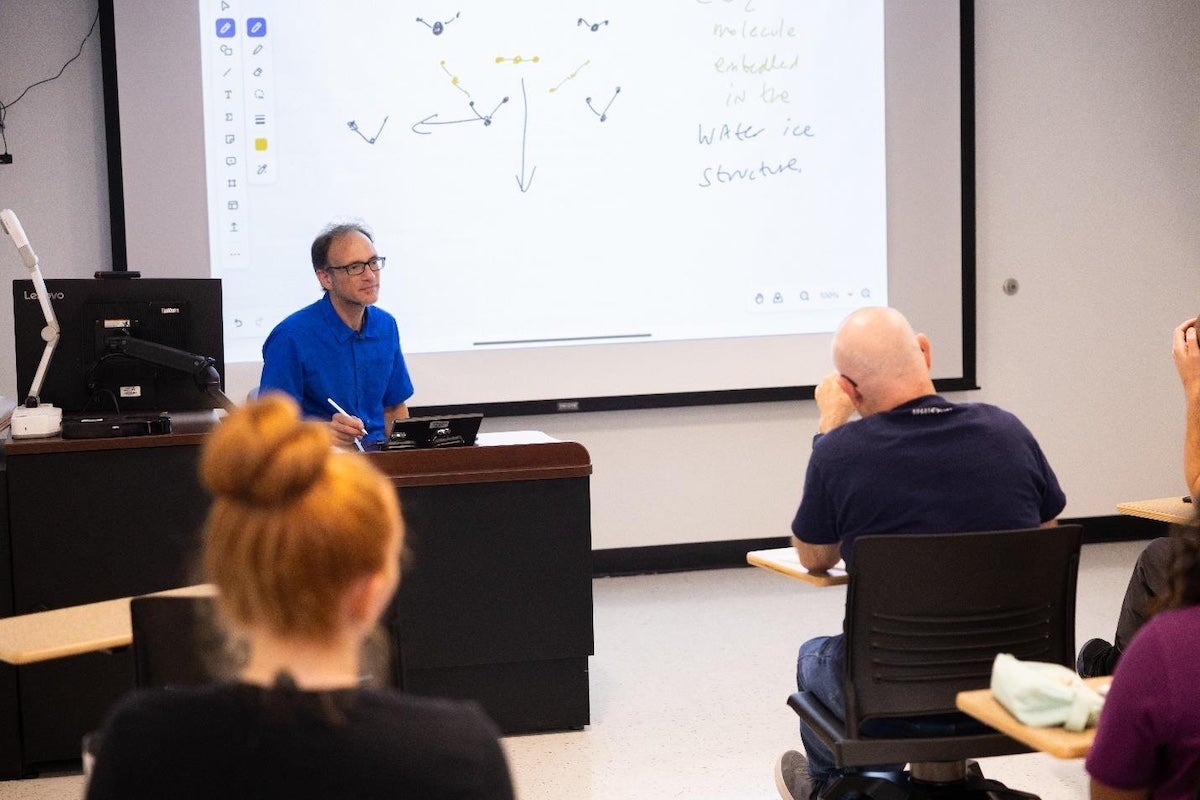New Study Reveals How Frogs Use Bile and Bruise Color for Camouflage
Researchers have discovered, for the first time, how frogs use the chemical responsible for the color of bile and bruises for their own camouflage coloring.
The mechanism the frogs use to turn what is essentially a waste product into a part of their protection is detailed in a new study published this month in the journal Proceedings of the National Academy of Sciences.
“In this study, we used a combination of biochemistry, physics, genetics, taxonomy, and ecology to characterize the mechanism that generates chlorotic colors in frogs, or the particular bluish-green colors in some frogs’ lymph, bones, blood, and soft tissues,” says Bob Fitak, an assistant professor with UCF’s Department of Biology and study co-author.
The results not only give insight into frog biology and adaptation but also could inform research into regulating human biological processes.
The mechanism involves a protein called biliverdin binding serpin, which binds to biliverdin and keeps it from breaking down in the frog’s body and being excreted as waste.
Biliverdin is a green chemical produced from blood degradation that gives bruises a green color and, when further broken down, produces the yellow color seen in bile.
“With a lot of extra biliverdin around, the frog takes on the characteristic bluish-green color,” Fitak says. “This is similar to what happens in several human diseases that lead to a greenish skin hue. We also found that this particular mechanism evolved multiple times across many species of frogs and can be fine-tuned to mimic the exact colors of the foliage in which these frogs hide.”

The study was led by Carlos Taboada, a postdoctoral scholar with Duke University. Fitak began working on the project with Taboada while they were both postdoctoral researchers at Duke, and he continued the work at UCF.
For the study, the researchers examined the genetics and biochemistry of the chlorotic process in a well-researched frog species, Boana punctata, the polka-dot treefrog of South America, and compared the results with eight other species of chlorotic frogs.
The researchers found that similar chlorotic processes occurred in other species, and analyses suggested the chlorosis process evolved in different species independently.
Fitak, an expert in genetics and biodiversity, worked to help analyze the genetic data for the study.
“This included large datasets of sequences from active genes, called transcriptomes, from various frog species,” Fitak says. “We used the datasets to not only identify the actual DNA sequence of the newly characterized protein, biliverdin binding serpin, in each frog species, but to quantify how much of it is produced in the liver. It turns our chlorotic frogs, or frogs with bluish-green lymph, bones, and soft tissue, produce a ton of it.”
Fitak says the findings may also inform human health and medical research.
“This family of proteins, called serpins, which prevent other proteins from being chopped up, are critical for regulating lots of biological processes,” Fitak says. “There is a huge amount of research into the medical applications of serpins, so understanding all the possible ways in which serpins act can translate into human health applications.”
Study co-authors also included Andrés E. Brunetti with the Universidade de São Paulo; Mariana L. Lyra with Universidade Estadual Paulista; Ana Faigón Soverna with Consejo Nacional de Investigaciones Científicas y Técnicas; Santiago R. Ron with Pontificia Universidad Católica del Ecuador; María G. Lagorio with Universidad de Buenos Aires; Célio F. B. Haddad with Universidade Estadual Paulista; Norberto P. Lopes, Universidade de São Paulo; Sönke Johnsen with Duke University; Julián Faivovich with Consejo Nacional de Investigaciones Científicas y Técnicas; Lucía B. Chemes with Consejo Nacional de Investigaciones Científicas y Técnicas, and Sara E. Bari, with Universidad de Buenos Aires.
The work was funded by a Human Frontier Science Program postdoctoral fellowship, a Consejo Nacional de Investigaciones Científicas y Técnicas doctoral fellowship, a São Paulo Research Foundation postdoctoral fellowship, grants from Agencia Nacional de Promocion Cientifica y Tecnologica, the Universidad de Buenos Aires, Grupo Boticario dep Protecao a Natureza, Conselho Nacional de Desenvolvimento Cientifico e Tecnologico, Secretaria Nacional de Educacion Superior, Ciencia, Tecnologia e Innovacion del Ecuador, and Direccion Genral Academica PUCE.
Fitak received his doctorate in genetics from the University of Arizona and his bachelor’s in molecular genetics from The Ohio State University. Before joining UCF in 2019, he worked as a postdoctoral researcher at the Institute for Population Genetics in Vienna, Austria, and at Duke University. He is a member of UCF’s Genomics and Bioinformatics Cluster.
Share This Article

UCF Women’s Club Honors 3 Graduate Students with Prestigious Sheila B. Somerville Scholarship
Financial support is often the cornerstone of academic success, and for many students, scholarships open the door to higher education. Beyond easing financial stress, these awards provide recognition, motivation, and a...
Latest News

UCF Launches 1st Planetary and Space Sciences PhD Program in Florida
As SpaceU, UCF is pushing the boundaries of exploration by launching a groundbreaking new doctoral program in the planetary and space sciences. Now, aspiring researchers can apply to the inaugural cohort of...

UCF Fulbright Awardees Bring Their Passions to a Global Scale
Each year, the Fulbright Program offers opportunities for American students to conduct research, teach English, or pursue graduate study abroad. One of the most prestigious international exchange programs in the...

Unleash Opportunities with a UCF Graduate Degree
A graduate degree has the power to unleash opportunities by expanding careers, opening doors to new fields, and increasing lifetime earnings. According to the U.S. Bureau of Labor Statistics (2024),...

UCF Rosen College Ranks No. 1 in the World for Hospitality Education for 2025
One of the most anticipated theme parks in the world is about to open its gates — and right next door, the No. 1 hospitality and hotel management school on...